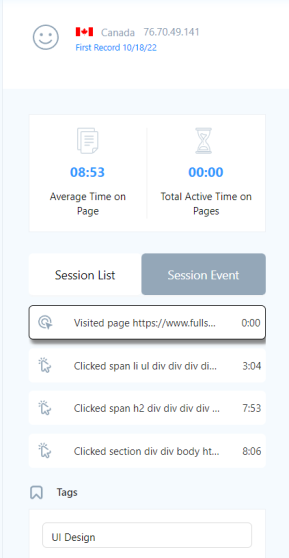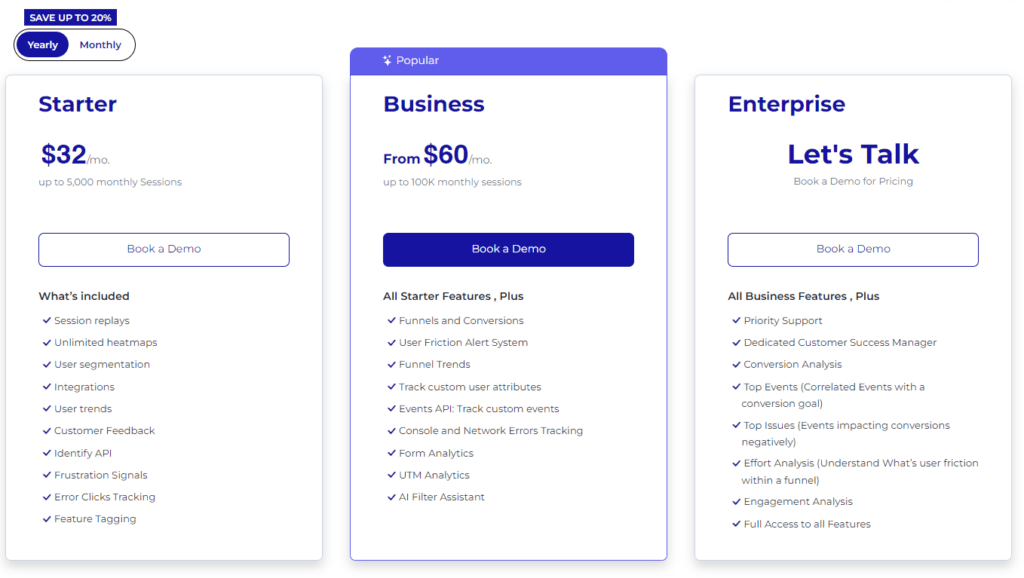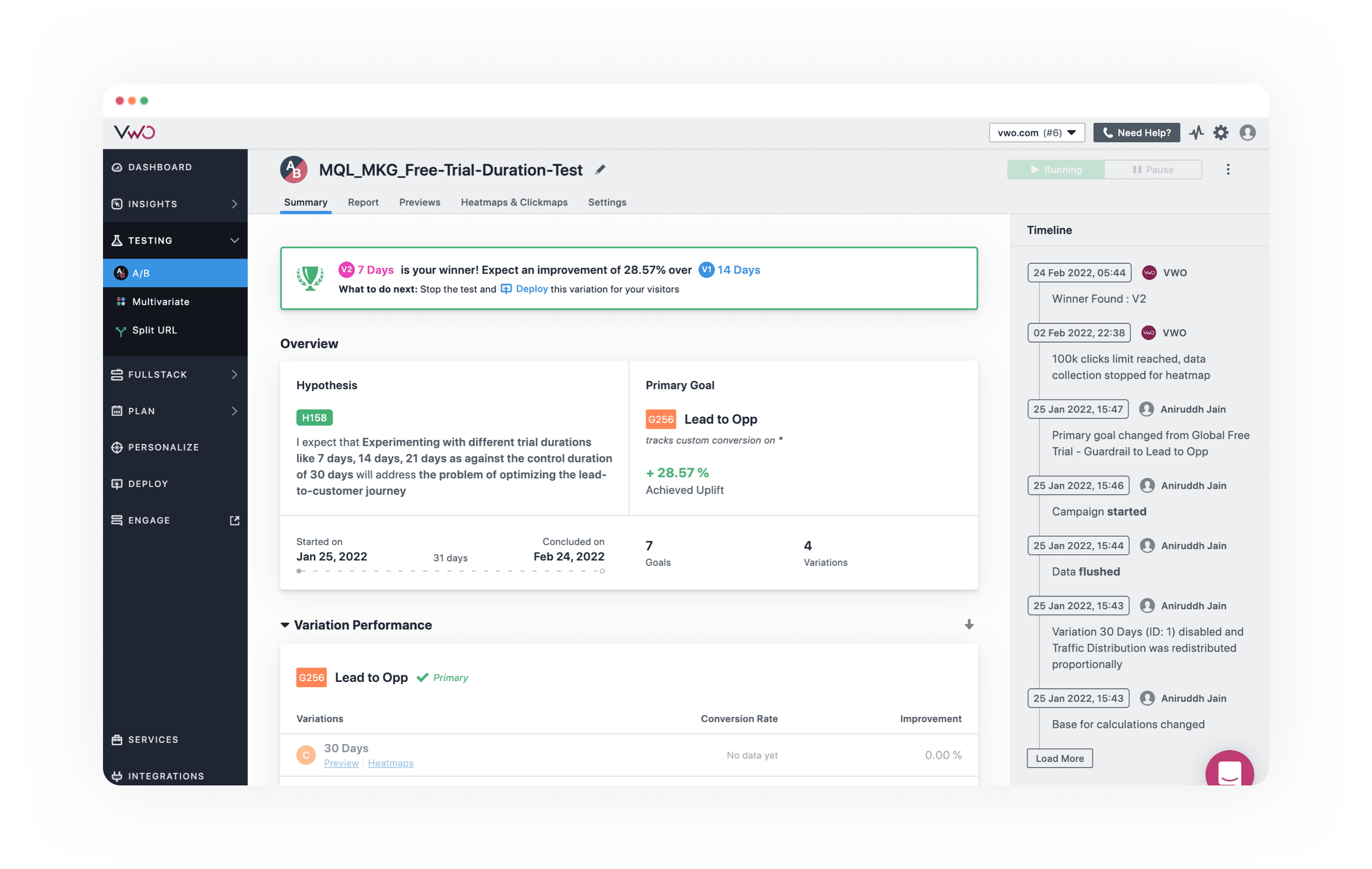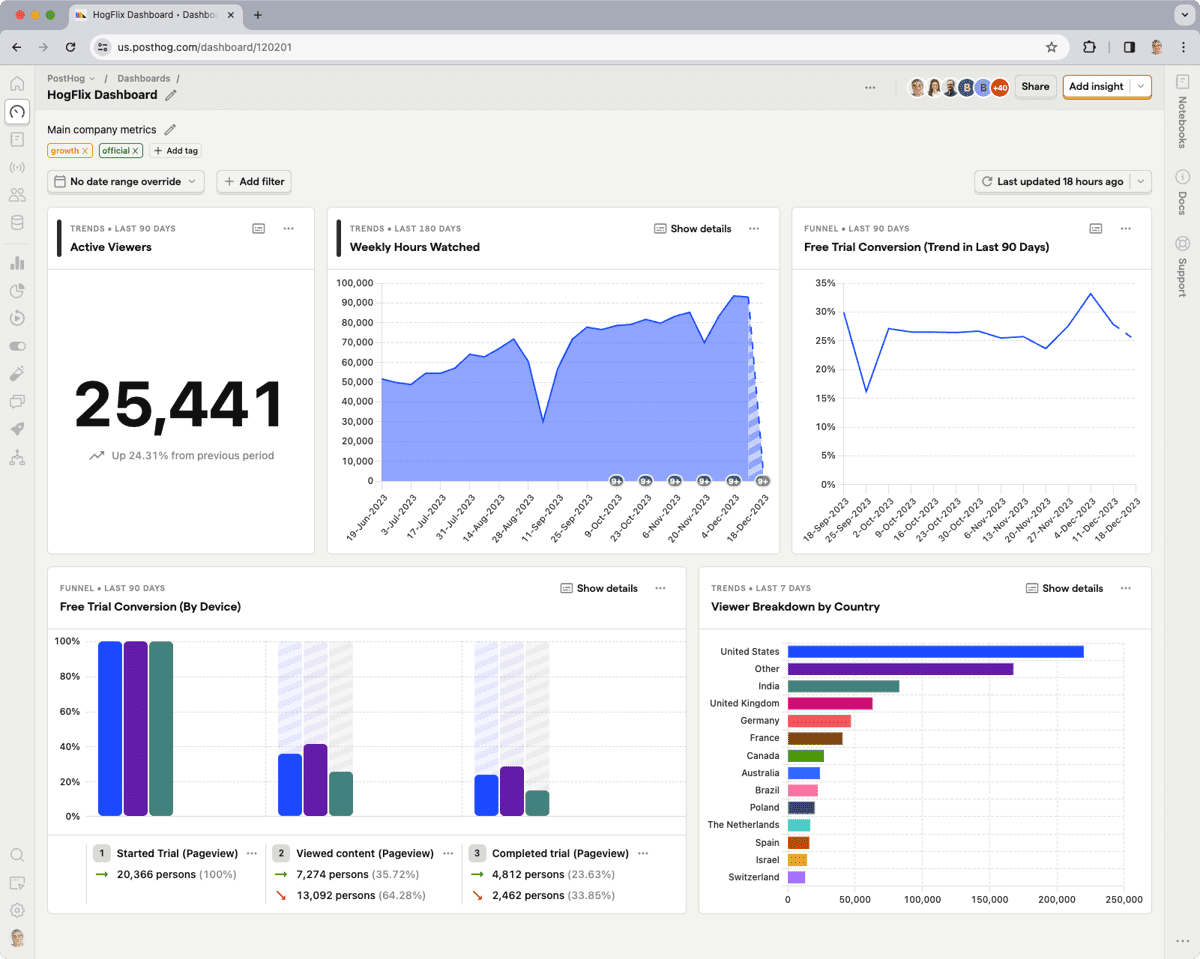Are you looking to optimize your website's performance but unsure if VWO is the right choice? You're in luck! We've compiled...

Qualitative Data: Definition and Ways to Collect It (+Use Cases)
Knowing everything about customers sometimes goes beyond numbers. That's the point of qualitative data—it captures life's rich narratives beyond mere numbers.
Dive into this read to get savvy about how these vibrant details shape research in ways spreadsheets never could.
In this article, we'll also show you some real-world examples where this data collection method simply shines. Stay tuned to learn more!
What is Qualitative Data?
Qualitative data works with non-numerical information collected through methods such as interviews, observations, and open-ended questions. It understands the subject matter deeply and supports a deductive approach.
Think of it as the vibrant paint on an artist's palette, ready to tell a story that numbers alone can't.
Unlike its quantitative counterpart, which loves to count and measure, qualitative data thrives on capturing the full spectrum of human experiences—those rich textures and shades that bring depth to our understanding.
Why Qualitative Data Is Important?
Qualitative data helps market researchers find much more detailed feedback from their customers. Sure, knowing how many people click a button on your website gives you something measurable. But it's through watching session recordings or analyzing heatmaps provided by tools like FullSession that you get the "juicy" details.
This type of insight is what sets businesses apart—the ability not just to collect dots but connect them, too.
You might notice patterns emerge from this silent narrative that reveals more about usage habits than direct questions ever would because let's face it—who doesn’t tweak the truth now and then?
The thing about qualitative data? It may be trickier to quantify, yes, but it can see things beyond the line of the "visible."
Types of Qualitative Data
In research and data analysis, it's often the rich details from qualitative data that bring context and color to our understanding. Let's see the main collection methods used in qualitative research.
1. Interviews
Through interviews, the data collected is rich and nuanced and provides a deep understanding of the participants' perspectives, experiences, and attitudes. If you want to collect product feedback, interviews allow for detailed and specific responses, thus helping the researcher to comprehend the user's experience and opinions.
Such direct interaction ensures that the researcher collects data that is both comprehensive and specific to the study's objectives
In business settings for example, customer interviews help companies get under their market's skin better.
Such kind of intel is what helps brands stay ahead because they know exactly what makes their customers tick.
2. Observations
If interviews let us hear people's stories firsthand, then observations allow us to watch these tales unfold in real-time sneakily (but ethically). User testing is one powerful tool for UX research to observe user behavior directly.
This method lets researchers play detective without so much as whispering, "I suspect foul play."
It shines when studying how people use products naturally - revealing stumbling blocks they might not even be aware enough to articulate.
3. Textual Analysis
Last up is textual analysis – basically book clubbing your way through anything written down or typed up related to your study topic, from social media posts to academic papers.
It is all about unpacking language patterns plus underlying meanings behind words.
Beyond spotting trends across tweets or reviews, that technique digs deeper and exposes beliefs and attitudes, even cultural norms embedded within texts, making sure no page gets left unturned or any word misunderstood.
Use Cases of Qualitative Data
Qualitative data has many use cases, and it's pivotal for many industries. We'll touch base on some of them. Let's see.
1. In Business
In business, companies often use customer interviews to get the nitty-gritty of user experience. It's like detective work, where every opinion or facial expression can unlock secrets to improving products or services.
For instance, through customer feedback sessions, businesses might discover that users find their website harder to navigate than a maze without an exit – crucial insight for any web development team.
2. Healthcare
The healthcare sector relies heavily on patient narratives because symptoms are not just physical; they’re personal stories.
When doctors listen closely to these stories of discomfort or pain relief patterns during checkups, they gather reference material that is essential for diagnosis and treatment plans, turning patients into storybooks rather than just another number.
3. Educational Insights from Classrooms
Schools are gold mines for qualitative data collection, too. Educators may observe classroom interactions and realize some teaching methods spark excitement.
Such in-depth analysis can greatly help universities, too. Both schools and universities utilize insights from attendance patterns, engagement levels, and resource usage to inform policy and curriculum development.
4. Social Sciences
In social sciences, researchers conduct ethnographic studies by immersing themselves within communities; it’s almost like going undercover but with more note-taking and less drama.
Such a method could reveal how cultural nuances influence behavior subtly.
Pros and Cons of Qualitative Data
When it comes to understanding the intricacies of human behavior, qualitative data might be the right tool for each researcher. Still, it isn't perfect, but we're about to find out in the next paragraphs.
Advantages of Qualitative Data
Qualitative data gives us stories with depth. Imagine trying to understand why people love their favorite coffee shop; numbers might tell you how many customers come back, but conversations reveal the aroma's nostalgic pull or the barista's infectious smile.
It's this richness that helps businesses tailor experiences to connect emotionally with customers.
Beyond anecdotes, qualitative research is flexible by nature—like an improvisational dance rather than rigid choreography.
Researchers have room to explore unexpected avenues as they emerge during interviews or focus groups.
Disadvantages of Qualitative Data
But let’s not get lost in romanticism because there are real challenges, too. For starters, analyzing reams of text from interviews or field notes isn't for faint-hearted novices—it requires skilled interpreters who can identify patterns without injecting personal bias.
Furthermore, while quantitative results boast statistical significance and replicability, critics often view qualitative findings through skeptical lenses due to their subjective nature—as if they were trying to decipher abstract art instead of clear graphs.
There's also time consumption; where quantitative studies sprint toward conclusions with rapid number-crunching software tools at hand, qualitative data requires some (or all) of the following:
- Pouring over transcripts
- Analyzing video recordings
- Coding textual responses manually takes patience—a luxury in fast-paced environments.
So, while qualitative research invites us into a world rich with color and texture beyond mere digits' black-and-white clarity, we must tread carefully around its pitfalls lest our insights slip into subjectivity’s quicksand.
How to Collect Qualitative Data?
The process of collecting data for your research includes five steps. Let's see which they are:
- Define Your Research Objectives: Clearly outline what you aim to understand through qualitative research. It's paramount to pay a lot of attention because you might miss your targets if you do it incorrectly.
- Choose Your Data Collection Methods: Select the most appropriate qualitative data collection methods for your study. Each method has its strengths and caters to different types of research questions.
- Develop a Data Collection Plan: Prepare your data collection instruments, such as interview guides or observation checklists. Plan the logistics of your data collection. Select participants, schedule sessions, and address ethical considerations, like informed consent.
- Collect the Data: Implement your data collection plan. Be attentive and adaptable, as qualitative research often uncovers unexpected insights that may require you to adjust your approach on the go.
- Organize and Prepare Data for Analysis: After collecting your data, organize it for analysis. Having your data systematically organized will bring a more effective and thorough analysis process.
How To Analyze Qualitative Data?
If you want to analyze qualitative data, you need to use a systematic examination to find out patterns and trends from the collected data.
1. Thematic Analysis
Imagine thematic analysis as your research's highlight reel. It’s about picking out recurring themes across your dataset—whether they're glowing reviews or gripes about user experience.
You sift through responses from interviews or focus groups and tag them with codes—a fancy term for labels—to track common threads.
2. Coding
Coding is less about ones and zeroes here; it's more akin to sorting laundry by color and fabric type. Each piece of data gets sorted into categories you've created based on their significance to your study’s goals.
But beware—the wrong coding strategy can leave you tangled in data without any useful insight. And you need someone with technical knowledge.
3. Leverage Software Tools
Gone are the days when researchers had to comb through stacks of paper with nothing but sticky notes and sheer willpower. Modern problems require modern solutions, so enter stage left software tools designed specifically for qualitative analysis.
To make sense of complex user behavior patterns online, FullSession offers session recording features that turn abstract clicks into concrete stories worth reading—and learning from.

Remember, peeling back layers of qualitative data gives context colors—it paints pictures quantitative stats can’t capture alone because life isn't just black-and-white (or red-and-green bar graphs).
Qualitative vs Quantitative Data: Which Is Better?
Both qualitative and quantitative data add a lot of value for your business or organization. We can't disregard each. That's why we'll try to see which one suits your next research better.
1. Distinguishing Qualities
The essence of qualitative data lies in its ability to capture the colorful intricacies of human experience, which often elude nominal data. It's about focusing on behaviors and emotions that tick behind our decisions to understand why people do what they do. Meanwhile, quantitative data zeroes in on hard facts—the who, what, when, and where—with precision but may miss out on context.
To grasp these differences more clearly:
- Qualitative: Imagine interviewing someone about their favorite book—it’s all about feelings and opinions.
- Quantitative: Now consider counting how many books they read last year—a straightforward tally.
2. Critical Applications
In business or research settings, context is king when making informed decisions, which makes qualitative insights priceless. For instance:
- A focus group discussing a new product gives life to customer sentiments beyond mere satisfaction scores.
- User testing sessions reveal not just if an app feature is used but how it feels intuitively to interact with it—crucial for UX designers crafting memorable digital experiences.
- In healthcare, patient stories can illuminate subtleties in care quality missed by statistics alone.
Start Collecting Qualitative Data Right Now
It takes less than 5 minutes to set up your first website or app feedback form, with FullSession, and it's completely free!
After that, you will be able to collect high-quality feedback and avoid the guesswork.
FullSession Pricing Plans

Here are more details on each plan.
- The Starter plan costs $39/month or $32/year and allows you to monitor up to 5,000 monthly sessions with up to 6 months of data storage.
- The Business plan costs $75/month or $60/year and helps you to track and analyze up to 100,000 monthly sessions with up to 12 months of data storage.
- The Enterprise plan has custom pricing and offers customizable sessions plus full access to all features.
Conclusion
Qualitative data paints the full picture. It digs deep where numbers can't reach, unveiling the human stories behind statistics.
Bear in mind these pointers. While qualitative insights offer depth, watch out for biases. Approach analysis with a mix of creativity and rigor to get it right.
Harness its power wisely: knowing when to use qualitative over quantitative data can make or break your research outcomes—so choose based on what story needs telling.
FAQs in Relation to Qualitative Data
What is the main benefit of using qualitative data in research?
Qualitative data provides depth and detail and provides good insights into the 'why' and 'how' behind human behaviors and decisions, which numbers alone can't reveal.
What is qualitative vs quantitative data?
Qualitative research explores the 'why' through words; quantitative research measures the 'how much' with numbers.
Why might someone choose qualitative research over quantitative?
If the research goal is to explore concepts or phenomena in-depth rather than to quantify them, qualitative research is the appropriate choice.
Can qualitative data be quantified for analysis?
While inherently non-numerical, qualitative data can be categorized and indirectly quantified through coding for thematic analysis and pattern identification.




